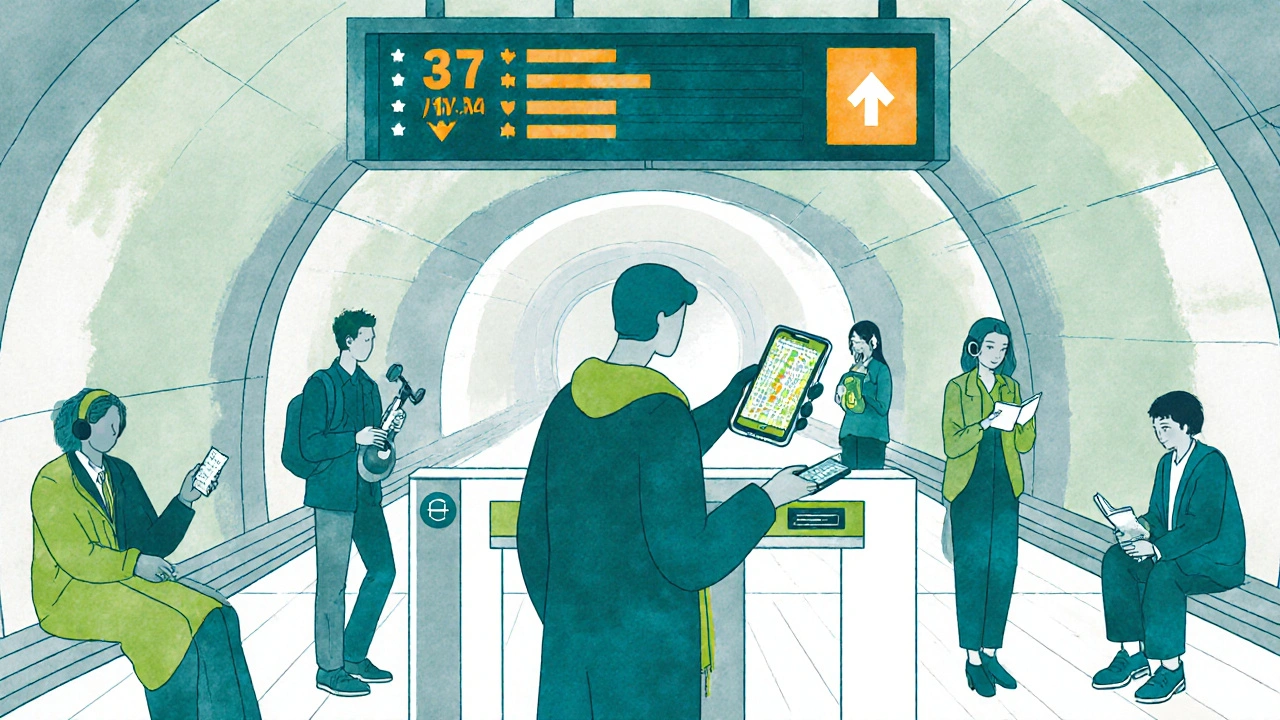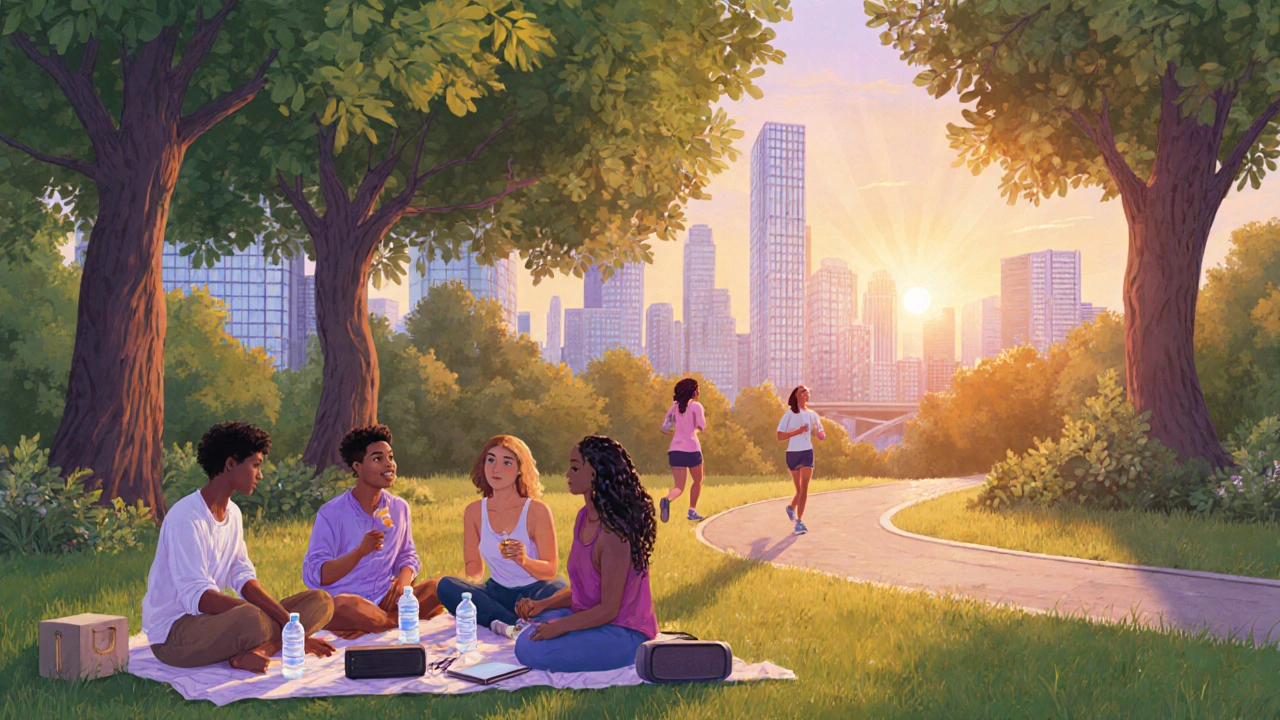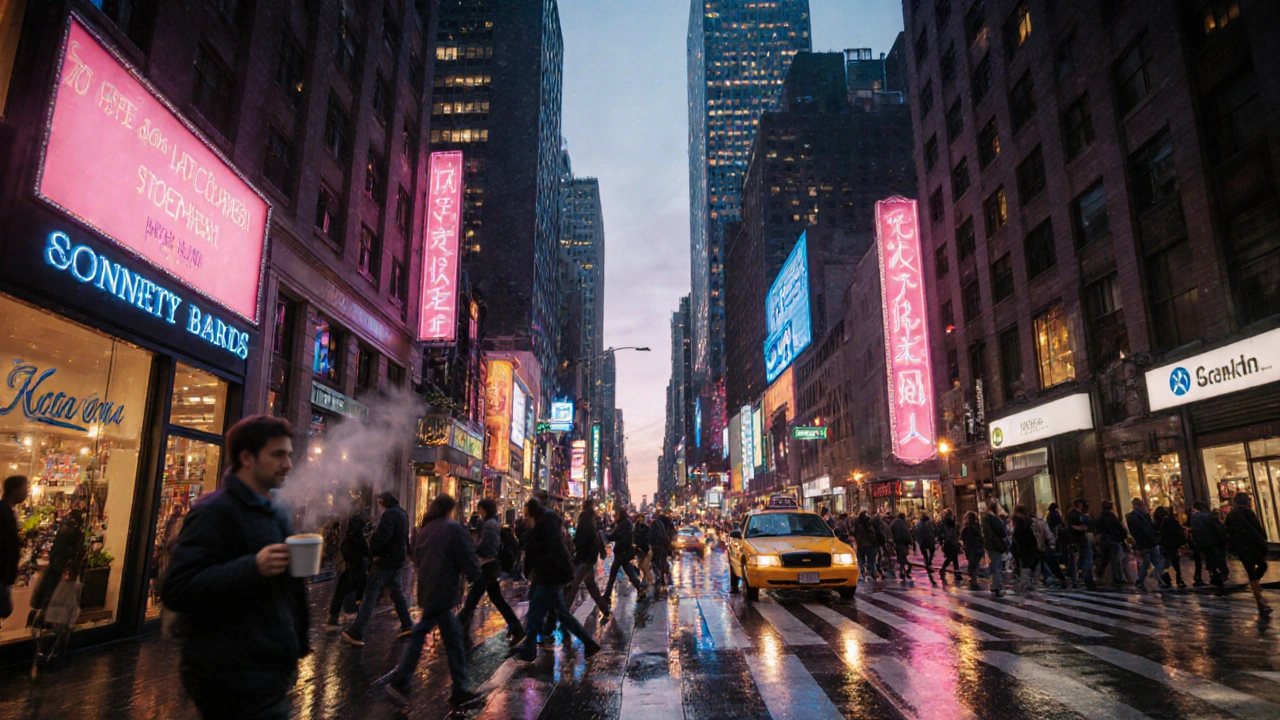When you hear the phrase Big City Life is the fast‑paced, high‑energy experience of living in a major metropolitan area, where skyscrapers dominate the skyline and culture never sleeps, you probably picture neon lights, crowded subways, and coffee shops on every corner. But there’s more to the concrete jungle than Instagram‑ready photos. Below is a down‑to‑earth guide that walks you through the everyday realities, offers practical hacks, and helps you turn a bustling city into a place that feels like home.
Why the Concrete Jungle Feels Different
Living among thousands of strangers creates a unique blend of anonymity and connection. In a big city, you can disappear in a crowd yet run into a fellow comic‑book fan at a rooftop bar. The constant hum of traffic, the rush of pedestrians, and the skyline that changes with the seasons all contribute to a sensory overload that can be thrilling and exhausting in equal measure.
- Speed of life: Decision‑making happens faster; you learn to trust your gut.
- Diversity of people: Different languages, cuisines, and traditions sit side by side.
- Opportunity density: Jobs, events, and networking chances are literally on every block.
Understanding these dynamics is the first step toward thriving, not just surviving.
Surviving the Commute: Public Transportation Hacks
Public Transportation is the network of buses, subways, trams, and commuter rails that moves millions of city dwellers every day. Mastering it can shave hours off your day and save money.
- Get a reloadable transit card; it offers fare discounts and speeds up entry.
- Download real‑time apps (e.g., CityTransit, Moovit) to avoid delays.
- Plan a backup route; construction can turn a five‑minute ride into a nightmare.
- Use the commute time to learn: podcasts, language apps, or audiobooks turn travel into productive time.
- Stand on the right side of escalators-ever‑green courtesy tip that keeps flow smooth.
These habits turn the daily grind into a predictable, even enjoyable part of your routine.
Finding Space in Sky‑High Living
High-rise Apartments are multi‑floor residential units in skyscrapers that offer both spectacular views and limited square footage. The key is to maximize every inch.
- Opt for multipurpose furniture: a sofa that folds into a guest bed, or a coffee table with storage.
- Use vertical space-install floating shelves, hanging racks, and tall bookcases.
- Choose light colors for walls; they reflect natural light and make rooms feel larger.
- Invest in good curtains or blinds to control noise and heat from the street.
Living above the city doesn’t have to feel cramped if you design with intention.
Green Oases: Using Urban Parks to Recharge
Urban Parks provide public green spaces within city limits where residents can relax, exercise, and socialize. They’re the lungs of the concrete jungle.
Try these ideas to make the most of them:
- Schedule a 15‑minute “park break” after lunch for a quick walk or meditation.
- Join a weekend community sports league-soccer, yoga, or frisbee.
- Take advantage of free Wi‑Fi zones for remote work with a view.
- Bring a reusable water bottle and a portable snack; park picnics are cheaper than coffee shops.
Regular visits not only boost mental health but also connect you with fellow city explorers.

Managing Noise and Stress
Noise pollution is a daily reality. According to a 2024 study by the Urban Health Institute, residents exposed to traffic noise above 70dB have a 12% higher risk of hypertension. Mitigation strategies include:
- Invest in white‑noise machines or earplugs for sleeping.
- Seal windows with weather‑stripping to block street sound.
- Schedule “quiet hours” at home-no TV after 9p.m., low‑light reading instead.
- Practice deep‑breathing or short mindfulness exercises during high‑stress moments.
These simple steps keep the city’s roar from taking over your health.
Balancing Budget: Understanding Cost of Living
Cost of Living is the overall expense required to maintain a standard of living in a specific location, including housing, food, transportation, and services. It’s the biggest factor that separates city dwellers from suburbanites.
Here’s a quick breakdown for a typical U.S. megacity in 2025:
- Rent for a one‑bedroom in the city center: $2,300/month.
- Monthly transit pass: $130.
- Average grocery bill for one person: $350.
- Gym membership (mid‑range): $70.
To keep expenses in check, try these tactics:
- Room‑share or sublet a portion of your lease during off‑season months.
- Cook at home three nights a week; bulk‑buy staples at wholesale clubs.
- Use discount apps for dining and entertainment (e.g., FeastNow, UrbanPass).
- Track all spending for 30 days with a budgeting app to spot hidden leaks.
When you know where the money goes, you can allocate more for experiences that truly matter.
Building Community in a Sea of Strangers
Social connections are the secret sauce that turns a city from a cold maze into a supportive network.
- Join local Meetup groups based on hobbies-photography, coding, board games.
- Volunteer at community gardens or food banks; the vibe is rewarding and the friendships are genuine.
- Attend neighborhood block parties or street festivals; they’re free and showcase local culture.
- Use coworking spaces not just for work but for networking events and skill‑share sessions.
Even a brief weekly commitment can create a sense of belonging that offsets the anonymity of city life.

Big City vs Small Town: A Quick Comparison
| Aspect | Big City | Small Town |
|---|---|---|
| Cost of Housing | High - average $2,300/month for 1BR | Low - average $1,200/month for 1BR |
| Commute Time | 30‑45min (public transit) | 10‑15min (car) |
| Social Opportunities | Hundreds of events weekly | Few, but tighter community |
| Noise Levels | 70‑85dB (street, nightlife) | 30‑45dB (quiet) |
| Access to Services | 24/7 hospitals, gyms, libraries | Limited hours, fewer options |
Use this table to weigh what matters most for your lifestyle. Some thrive on the hustle; others prefer the calm. Either way, you now have concrete data to inform your decision.
Quick Checklist for New City Dwellers
- Set up a reloadable transit card.
- Map out three nearby parks and schedule weekly visits.
- Buy a white‑noise machine or high‑quality earplugs.
- Create a budget spreadsheet; include rent, transit, food, fun.
- Join one hobby group or volunteering activity within the first month.
- Invest in multipurpose furniture to maximize space.
- Test a few coffee shops for Wi‑Fi and ambiance before settling on a remote‑work spot.
Cross these off as you settle in, and you’ll feel at home in the concrete jungle faster than you imagined.
Frequently Asked Questions
How can I keep rent affordable in a big city?
Consider subletting a spare bedroom, joining a roommate matching platform, or moving slightly outside the city core where rent drops by 20‑30%. Also, negotiate lease terms for longer commitments that may lock in lower rates.
What are the safest neighborhoods for newcomers?
Safety varies by city, but generally neighborhoods with a strong residential presence, active community boards, and good street lighting rank high. Research local crime statistics, read recent resident reviews, and visit at different times of day before moving in.
How do I avoid feeling isolated in a huge metropolis?
Join interest‑based Meetup groups, attend free city‑wide events, or volunteer at local NGOs. Even a weekly coffee meetup with coworkers can create a sense of belonging.
What’s the best way to stay healthy with limited outdoor space?
Utilize city gyms, rooftop yoga classes, or streaming workout videos in a small apartment. Incorporate short walks in nearby parks during lunch breaks to boost cardio and clear the mind.
Can I rely solely on public transportation for daily needs?
In most major cities, a well‑connected transit system covers the majority of destinations: work, grocery stores, gyms, and entertainment venues. Keep a bike or ride‑share app as a backup for late‑night trips or underserved routes.


Write a comment